Delhi authorities contribute to sectarian violence in the capital
Videos show Delhi police complicity in
Delhi authorities contribute to sectarian violence in the capital
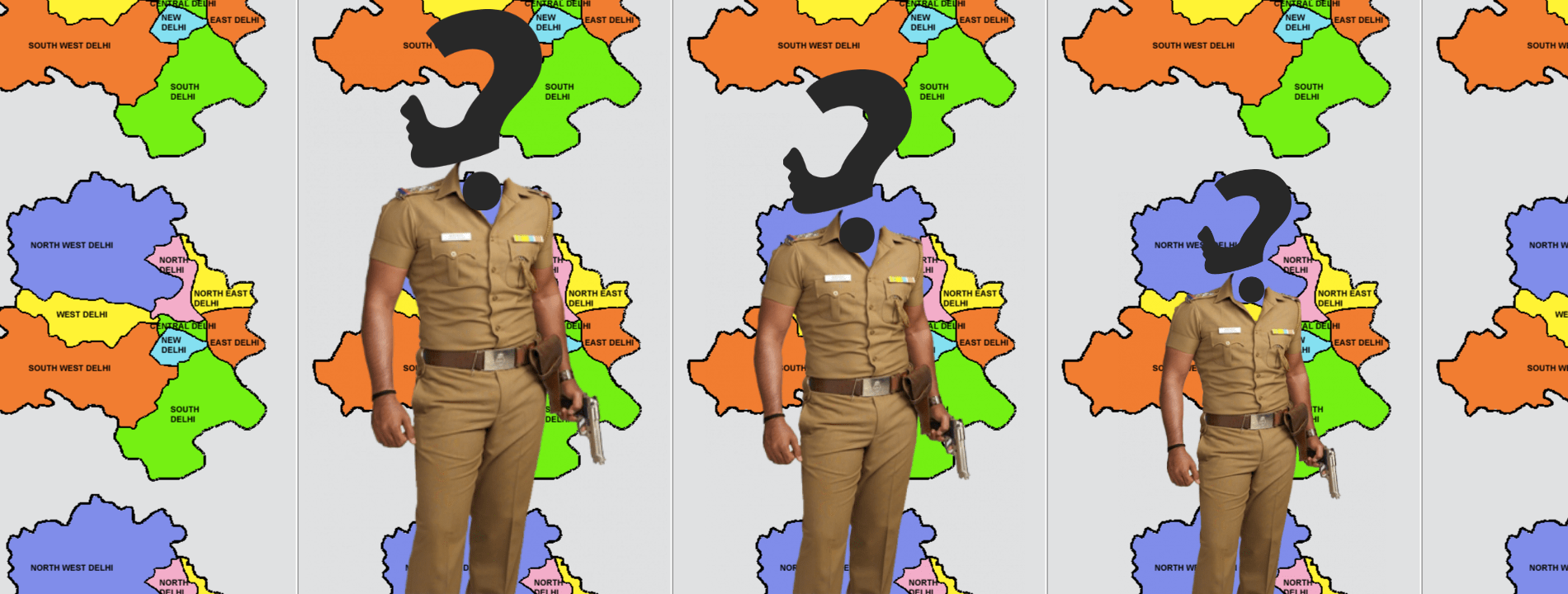
Videos show Delhi police complicity in communal violence that raged across several localities in the Indian capital
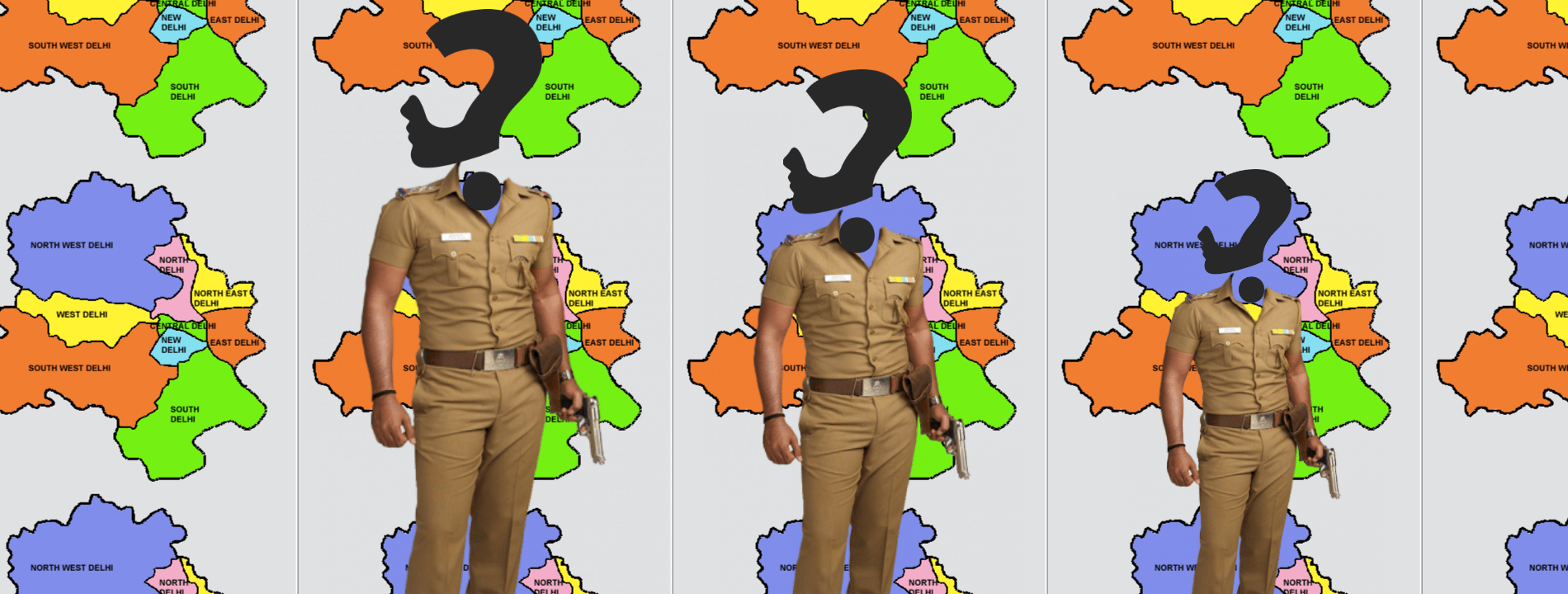
An eruption of communal violence between armed mobs in several parts of Delhi, India, left 53 dead and over 200 injured between February 24 and March 2, 2020. Videos shared on social media showed members of the Delhi police either abetting or actively participating in the violence.
The videos contradict government officials’ attempts to quell the violence, possibly contributing to a deficit in public trust in the local police. In light of the ongoing coronavirus pandemic, it is unknown how — or whether — this roiling dynamic will take shape at the back end of India’s growing response to the crisis. On March 24, 2020, a day before the Indian prime minister introduced an initial three-week nationwide lockdown in an effort to curb the transmission of COVID-19, local authorities cleared the protest site at Shaheen Bagh, a locality in East Delhi that for months had served as the epicenter of popular mass protests against the Indian government. In light of the ongoing global pandemic, including 14,255 active cases and 559 deaths in India as of April 20, 2020, organizers at multiple protest sites across the country decided to suspend their public activities temporarily, urging their followers to adopt online modes of resistance instead.
The clashes in Delhi in late February took place within the context of nationwide protests against a controversial citizenship bill introduced by the national government, led by Prime Minister Narendra Modi and his Bharatiya Janata Party (BJP). The Citizenship Amendment Act (CAA) revises how a person can become a naturalized citizen and will likely have the indirect or implicit effect of tying citizenship to religion (singling out Islam in particular by not explicitly including it as a protected class). Because of this, the act has been opposed by a broad coalition of Indians spanning across religions, who argue the bill violates the secular nature of the Indian constitution.
Prior to the attacks on the CAA protesters, the Delhi police’s actions — or lack thereof — had already been questioned in two attacks on universities in the Indian capital. In both cases, the police were accused of not acting to stop the violence.
Anatomy of a riot
The anti-CAA protests led to the establishment of hundreds of 24-hour protest sites across the country, in a large part organized by women and elderly citizens, including sit-ins at prominent public intersections and minority neighborhoods. The tactics employed by the anti-CAA protesters have been opposed by supporters of the bill, who view the protests as a public inconvenience. The growing animosity between both sides had resulted in multiple violent attacks on the protesters as well as attempts to clear some of the most prominent protest sites in the capital forcibly.
This animosity reached new heights during the recent Delhi elections, which saw the BJP defeated by a substantial margin by the Aam Aadmi Party (AAP) “Common Man’s Party,” a regional party whose leader, Arvind Kejriwal, aspires to replace Narendra Modi as the country’s next prime minister.
This increasingly hostile dynamic finally erupted in violence on February 23, after Kapil Mishra, a BJP party worker from northeastern Delhi, gave an incendiary speech in which he threatened anti-CAA protesters. Flanked on either side by members of the Delhi police, Mishra proclaimed that a newly arisen protest site had to “clear the road in three days” or “they,” implying the BJP leader and his supporters, would be forced to “take matters into our own hands.”

The next day, February 24, communal violence broke out with armed Hindu mobs attacking a number of anti-CAA protest sites as well as systematically targeting Muslim homes, shops, and mosques in the northeastern part of the city. The violence also claimed the lives of a head constable with the Delhi police and a staffer working for the country’s Intelligence Bureau.
The ensuing clashes led to comparisons with the Gujarat Riots of 2002, during which Modi, then the chief minister of Gujarat, presided over sectarian riots that led to the death of thousands of citizens, mostly from the state’s minority Muslim community. The incident was also compared to the 1984 pogrom of 3,000 Sikhs in Delhi by sectarian mobs in retaliation for the assassination of former Prime Minister Indira Gandhi by two of her Sikh bodyguards.
As with its historical antecedents, the recent violence in Delhi saw the emergence of multiple images and videos that brought the professionalism of the local authorities into question, showing members of the local police aiding and abetting in the violence. An article by Reuters, written by two journalists present on the ground, reported that local authorities stood by as members of the Hindu mob wreaked havoc across Muslim neighborhoods. Another article by The Hindu, a nonpartisan Indian publication, furthered allegations from local residents that the police had ignored calls for help at the height of the violence.
Verifying the evidence
One of the videos that emerged online showed members of the Delhi police egging on Hindu protesters, encouraging them to charge and throw stones at anti-CAA protesters and Muslim residents living in Yamuna Vihar in northeast Delhi.
There was some coordination, too.
“Go ahead and throw stones,” one policeman shouted to protesters backing the law, during one of the running battles.
Why there weren't more cops immediately deployed is a little puzzling. pic.twitter.com/lxgc8446EH
— Devjyot Ghoshal (@DevjyotGhoshal) February 24, 2020
Devjyot Ghoshal, a Reuters correspondent covering the sectarian clashes on the ground, uploaded the video, saying it provided evidence of “some coordination” between the local authorities and the assailants. He also questioned why the central government had not deployed more police officers to intervene in the violence.
By identifying the business seen at the beginning of the video, Krishna Electricals, the DFRLab verified the location on a side street just off of Wazirabad Road in northeastern Delhi using Google Maps.
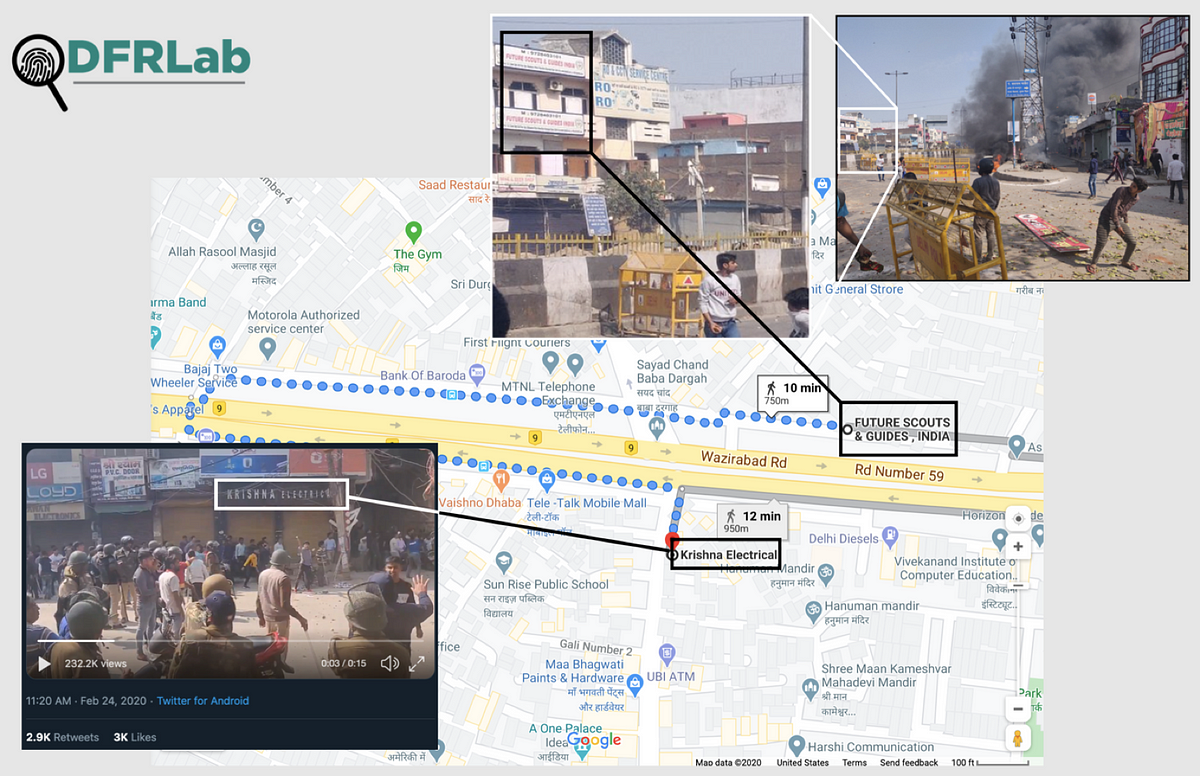
The DFRLab also identified a second business, Future Scouts and Guides, India, in another image also posted to Ghosal’s verified Twitter account. By entering the name of both businesses into Google Maps, the DFRLab found the approximate location of where the video was shot, confirming that it was shot in Bhajanpuri market, located in the Wazirabad locality — on Wazirabad Road — in northeastern Delhi.
Other details such as a gas station and an electricity pole in the same photo allowed further corroboration of the location.
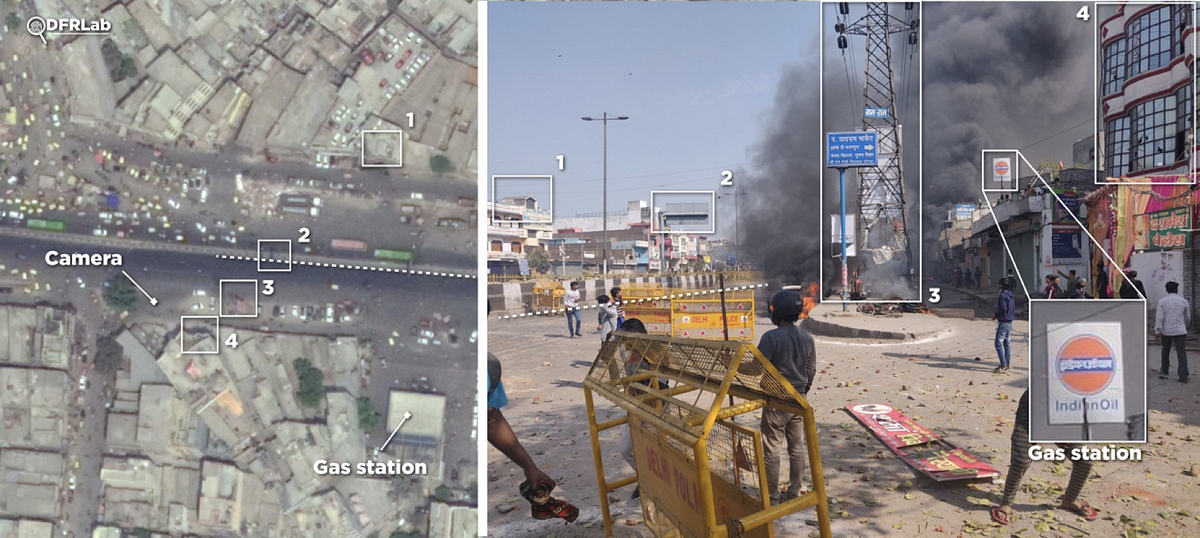
The next day, another video emerged showing members of the Delhi police beating and taunting injured protesters and asking them to sing the national anthem to prove their patriotism. @Shaheenbaghoff1, a Twitter account run by the organizers of one of the major anti-CAA protest site in eastern Delhi, uploaded the video, tagging the @DelhiPolice alongside a message asking, “When protector turns perpetrator, where do we go?”

The authenticity of the video was subsequently confirmed by AltNews, a local fact-checking outlet that analyzed other videos of the incident taken from different angles by Indian users. AltNews verified the police brutality against protesters and that it was recorded on February 24, the first day of sectarian violence. One of the five men pictured in the video, a 23-year old local tailor, subsequently died of his injuries, with senior officials now trying to obfuscate further investigations into the role of the police officers captured in the viral video.
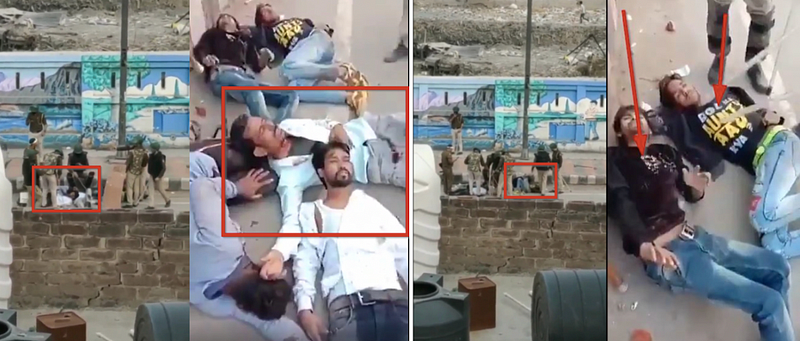
Finally, on February 26, the social media coordinator of the AAP, Ankit Lal, amplified a video that purportedly showed members of the Delhi police destroying public CCTV cameras. The DFRLab was unable to locate the original source of the video. The account tagged the official account of the Delhi police force, alongside a message asking “What do they want to hide?”
The video showed a police officer destroying CCTV cameras despite somebody offscreen –seemingly the individual recording the video or someone physically close to him — repeatedly asking the officer and his colleagues, all of whom are dressed in riot gear, “Why are you breaking the cameras?”
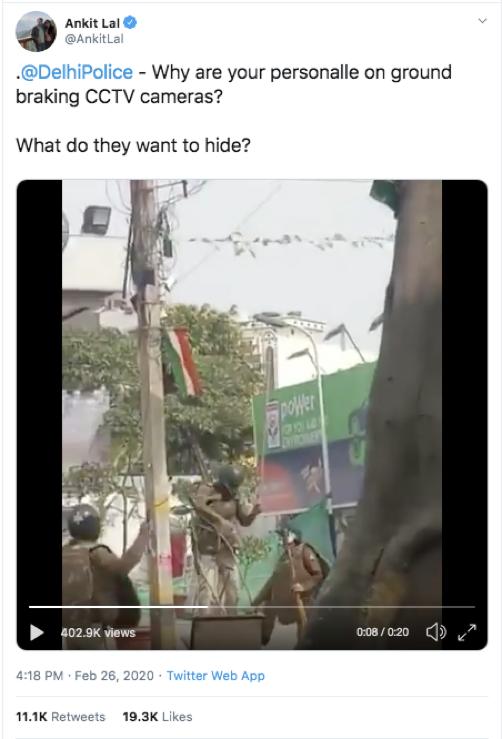
The authenticity of the video was confirmed by Scroll, a domestic outlet that published a fact-check after finding multiple other videos uploaded by Indian users on Twitter that depicted the same incident, from various angles. Consequently, the outlet was able to confirm that the video depicted officers destroying public property after clearing an anti-CAA protest site in Khureji Khas, in the northeast of Delhi.
Indian users uploaded multiple videos that showed the complicity of local police in the sectarian violence that racked the capital. The abuse of public trust by members of the police may tarnish the reputation of the institution as a whole, while also potentially encouraging more violence. As Delhi police turn a blind eye to — and sometimes actively participate in — the sectarian violence on the ground, radical and extreme groups may feel increasingly emboldened to take the law into their own hands.
Ayushman Kaul is a Research Assistant, South Asia, with the Digital Forensic Research Lab.
Follow along for more in-depth analysis from our #DigitalSherlocks.

